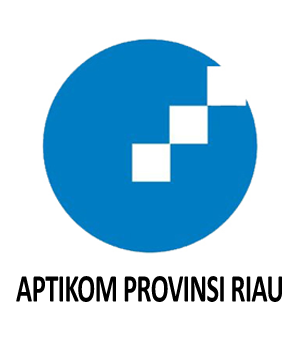The Effectiveness of Smart Learning Based on Expert Systems in Cryptography Courses
Abstract
The development of science and technology requires universities not only to matter but also to have abilities in their respective fields including Security System. The unavailability of network design laboratory and its minimum, network design, cryptography design and flexibility of face-to-face time in the discussion of material compiled not in accordance with the competencies in this course. To overcome these deficiencies in learning activities, development of a project-based blended learning model is carried out. The development carried out in this study uses the Puslitjaknov development model which reduces the Borg and Gall stages to five stages namely product analysis, initial product design, expert validation and revision, field trials and implementation. Data were collected by interview, observation, questionnaire and test. Data were analyzed using quantitative and qualitative methods to produce research products in the form of books, modules, learning plans and manuals for the use of learning applications. Product validation by experts, practicality tests carried out by users and effectiveness tests with student learning outcomes. Based on the results of data analysis, the results of this study are: 1) Research has successfully developed a project-based blended learning model in Cryptography courses. 2) The developed learning model syntax consists of 9 stages / syntax. 3) In supporting learning activities, modules, RPS and manuals are used for learning applications. All products and models developed have been developed and are categorized as valid, practical and effective.
Downloads
References
[2] H. M. Yongbin Zhang, Ronghua Liang, “Teaching innovation in Computer Netrwork Course for Undergraduates Students With PAcket Tracer,” Int. Conf. Futur. Comput. Support. Educ., vol. 2, pp. 504–510, 2012, doi: 10.1016/j.ieri.2012.06.124.
[3] N. Linge and D. Parsons, “Problem based learning as an effective tool for teaching computer network design Problem-Based Learning as an Effective Tool for Teaching Computer Network Design,” 2006.
[4] S. R. and L. C. D. H. Noel Davis capt and N. Through, “Teaching Computer Networks Through Modeling by,” Electr. Eng. Comput. Sci., 1996.
[5] N. I. Sarkar, “Teaching Computer Networking Fundamentals Using Practical Laboratory Exercises,” Annu. Conf. NACCQ, New Zealand, Junu 2000, pp. 1–22, 2000.
[6] J. Janitor, F. Jakab, and K. Kniewald, “Visual Learning Tools for Teaching / Learning Computer Networks Cisco Networking Academy and Packet Tracer,” pp. 351–355, 2010, doi: 10.1109/ICNS.2010.55.
[7] J. Pan, “Teaching Computer Networks in a Real Network The Technical Perspectives,” SIGCSE10, pp. 133–137, 2010.
[8] J. Ning et al., “Spatiotemporal patterns and characteristics of land-use change in China during 2010–2015,” J. Geogr. Sci., vol. 28, no. 5, pp. 547–562, 2018, doi: 10.1007/s11442-018-1490-0.
[9] W. F. Marti, U. W. Pooch, and J. A. Hamilton, “PACKET tracing : a new paradigm for teaching computer network courses,” pp. 162–164, 1996.
[10] L. l P. and B. Davie, “Computer Networks : A Systems approach,” Networks Telecommun., pp. 1–6, 2008.
[11] R. K. C. Chang, “Teaching Computer Networking with the Help of Personal Computer Networks,” pp. 208–212, 2004.
[12] Z. Ran, “Exploration on the Key Issues of Practical Teaching Reform of Computer Network,” vol. 17, pp. 1914–1919, 2012, doi: 10.1016/j.egypro.2012.02.332.
[13] M. Syahrizad, A. Zamzuri, and M. Ali, “Survey on the Challenges Faced by the Lecturers in Using Packet Tracer Simulation in Computer Networking Course,” Procedia - Soc. Behav. Sci., vol. 131, pp. 11–15, 2014, doi: 10.1016/j.sbspro.2014.04.070.
[14] X. Yu, “The Construction and Application of Simulation Teaching System for Computer Network Curricula,” IEEE, vol. 07, pp. 524–527, 2007.
[15] N. Jovanovic, R. Popovic, S. Markovic, and Z. Jovanovic, “Web Laboratory for Computer Network,” pp. 1–10, 2010, doi: 10.1002/cae.20417.
[16] A. Kayssi, S. Sharafeddine, and H. Karaki, “Computer-Based Laboratory for Data Communications and Computer Networking,” pp. 84–97, 2003, doi: 10.1002/cae.20002.
[17] D. Liu, P. Valdiviezo-díaz, G. Riofrio, and Y. Sun, “Integration of Virtual Labs into Science E-learning,” Procedia - Procedia Comput. Sci., vol. 75, no. Vare, pp. 95–102, 2015, doi: 10.1016/j.procs.2015.12.224.
[18] S. S. Kulkarni, “USING VOIP AS A COMMON FRAMEWORK FOR TEACHING A SECOND COURSE IN COMPUTER NETWORKS.” 2007.
[19] P. Sege, M. Kubina, and P. Palúch, “ViRo – the online tool for the networking education,” vol. 174, pp. 3788–3796, 2015, doi: 10.1016/j.sbspro.2015.01.1114.
[20] A. H. Aldholay, Z. Abdullah, T. Ramayah, O. Isaac, and A. M. Mutahar, “Online learning usage and performance among students within public universities in Yemen,” Int. J. Serv. Stand., vol. 12, no. 2, pp. 163–179, 2018, doi: 10.1504/IJSS.2018.091842.
[21] B. Collis and J. Moonen, “Flexible Learning in a Digital World,” Open Learn. J. Open, Distance e-Learning, vol. 17, no. 3, pp. 217–230, Sep. 2002, doi: 10.1080/0268051022000048228.
[22] I. W. Santyasa, “Validasi Dan Implementasi Model-Model Student Centered Learning Untuk Meningkatkan Penalaran Dan Karakter Siswa Sekolah Menengah Atas,” JPI (Jurnal Pendidik. Indones., vol. 4, no. 1, pp. 512–527, 2015, doi: 10.23887/jpi-undiksha.v4i1.4890.
[23] D. S. K. G. Jöreskog, LISREL 8: Structural Equation Modeling with the SIMPLIS Command Language. North Licoin Avenue, 1993.
[24] H. J. Snippert et al., “Lgr6 marks stem cells in the hair follicle that generate all cell lineages of the skin,” Science (80-. )., vol. 327, no. 5971, pp. 1385–1389, 2010, doi: 10.1126/science.1184733.
[25] “BEYOND,” vol. 36, no. 6, p. 2015, 2015.
[26] D. Purwanto, “Analisis Penilaian Tingkat Kesehatan Bank Pada Bmt Ums Dengan Metode Camel,” 2007.
Copyright (c) 2021 Mochammad Iswan, M. Syaifuddin, Rian Farta Wijaya

This work is licensed under a Creative Commons Attribution-ShareAlike 4.0 International License.
This is an open-access article distributed under the terms of the Creative Commons Attribution-ShareAlike 4.0 International License which permits unrestricted use, distribution, and reproduction in any medium. Users are allowed to read, download, copy, distribute, search, or link to full-text articles in this journal without asking by giving appropriate credit, provide a link to the license, and indicate if changes were made. All of the remix, transform, or build upon the material must distribute the contributions under the same license as the original.















